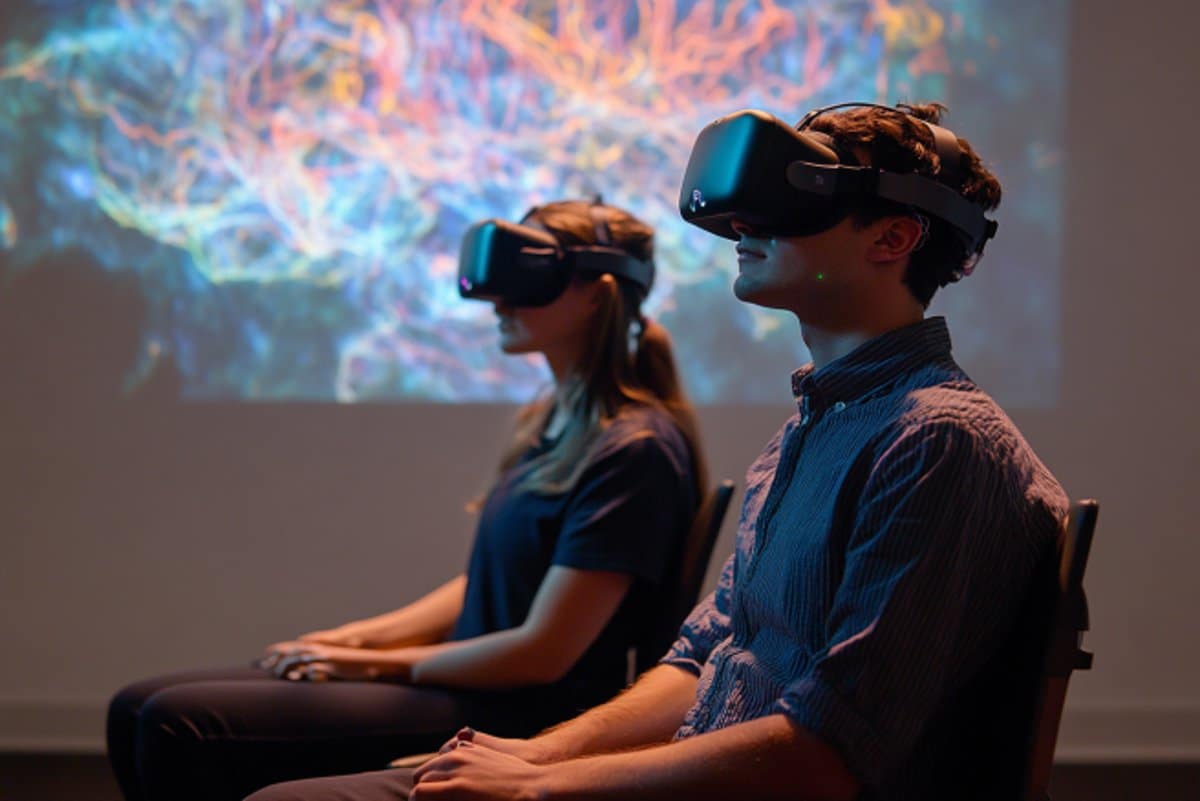Summary: A new study has identified the protein hnRNP A1 as a key player in the production and maintenance of myelin, the fatty sheath that insulates nerve fibers in the brain. Myelin loss is common in disorders like multiple sclerosis and schizophrenia, and this research shows that hnRNP A1 disruptions can impair myelination at the molecular level, even before behavioral symptoms appear.
Using a rodent model, scientists induced and later reversed demyelination to track the effects on memory, motor function, and social behavior. The findings offer fresh insight into how early molecular changes in myelin-related proteins could contribute to neurodegenerative and neuropsychiatric disorders, potentially opening new avenues for therapeutic intervention.
Key Facts:
- Myelin Disruption: Disruption of hnRNP A1 impairs myelin production and may play a role in schizophrenia and multiple sclerosis.
- Silent Molecular Shifts: Changes in myelin-related proteins occurred without immediate behavioral symptoms, suggesting early markers of disease.
- Reversibility Observed: Restoring myelin reversed behavioral deficits in rodents, underscoring therapeutic potential.
Source: FAPESP
Research published in the Journal of Neurochemistry has detailed the role of a protein, hnRNP A1, in the formation and stability of myelin, suggesting an important impact on neurodegenerative diseases and mental disorders such as multiple sclerosis and schizophrenia.
The findings pave the way for new research and potential treatments.
Myelin is a fatty substance produced by oligodendrocytes (cells of the central nervous system) that forms a sheath, like a kind of “insulator.”
It “protects” the extensions of neurons (axons) and increases the conduction speed of nerve impulses that carry information between neural cells.
Scientific literature has shown that patients with multiple sclerosis and schizophrenia lose myelin (called demyelination), leaving part of the axons “unplugged” and causing damage to brain function.
This rodent study examined changes in proteins essential for myelin production (myelination). The results highlight the involvement of hnRNP A1 in maintaining the integrity of this protective sheath.
hnRNP A1 regulates the processing of messenger RNA, i.e., it controls how the molecule is cut and assembled (splicing), thereby determining which proteins are produced and in what amounts. Studied for years by this group of scientists at the State University of Campinas (UNICAMP), in the state of São Paulo, Brazil, hnRNP A1 had already figured prominently in previous research carried out on brain tissue from people with schizophrenia and on cells grown in the laboratory.
“When I was a master’s student, I worked with oligodendrocyte predecessor cell lines and their responses to antipsychotics. This protein, hnRNP A1, always appeared. We decided to try to understand its role in oligodendrocytes.
“But to do this, we had to use an animal model to induce myelination and understand the process,” explains Caroline Brandão Teles, first author of the article and FAPESP doctoral fellow at the Institute of Biology (IB-UNICAMP).
For researcher Fernanda Crunfli, also from IB-UNICAMP and corresponding author of the paper, myelin has been an important target of study for neuropsychiatric diseases.
“We were able to analyze the demyelination process in the animals and then restore the myelin sheath. This allowed for an interesting study window.
“We did behavioral tests to assess locomotion, short- and long-term memory, and social interaction. When the myelin is restored, all these functions return to the brain,” says Crunfli, who was a FAPESP postdoctoral fellow.
Teles points out that this was one of the results that caught the group’s attention – the fact that the changes were detected at the molecular level, without affecting the animals’ behavior.
“With this molecular and non-behavioral alteration, the work has the interesting potential to pinpoint an important protein in the establishment of schizophrenia. This same animal model is analyzed in research on multiple sclerosis, for example, and when there’s a behavioral study, changes are noted.
“In the case of schizophrenia, the fact that the behavior isn’t altered indicates, in my opinion, that this protein is essential in the development of the disease and may have an influence on its genesis,” Professor Daniel Martins-de-Souza, from IB-UNICAMP, Teles’ supervisor and head of the Neuroproteomics Laboratory, told Agência FAPESP.
Schizophrenia is a mental disorder characterized by loss of contact with reality (psychosis), hallucinations, delusions, and impaired cognition, among other symptoms. The exact cause is still unknown, but recent research suggests a combination of hereditary factors and molecular and functional alterations in the brain. Treatment includes antipsychotic medications and psychotherapy.
It is estimated that approximately 1.6 million people in Brazil have schizophrenia. Worldwide, the prevalence is about 1% of the world’s population.
For years, Martins-de-Souza’s research group has been working to understand the role of oligodendrocytes in schizophrenia and has managed to map a series of brain proteins that help to unravel the molecular basis of the disorder.
To understand the research
The group used a rodent (murine) model that has also been studied in cases of multiple sclerosis, a disease characterized by severe demyelination.
From the eighth week of the experiment, demyelination was induced and continued for another five weeks. The process was then interrupted and the myelin sheath was restored.
During this time, the researchers analyzed the activity of hnRNP A1. “We saw that the proteins linked to myelin in these animals were all reduced. By disrupting the activity of this protein [hnRNP A1], we ended up disrupting myelination,” says Teles.
The scientists believe that studying the impact of the protein’s alterations on synaptic transmission and cognitive processes could reveal new therapeutic targets.
Funding: In addition to the grants, the research was also supported by FAPESP through six other projects (17/25588-1, 19/05155-9, 18/01410-1, 23/08885-3, 18/01669-5 and 23/11514-7).
About this schizophrenia research news
Author: Heloisa Reinert
Source: FAPESP
Contact: Heloisa Reinert – FAPESP
Image: The image is credited to Neuroscience News
Original Research: Open access.
“Impacts of hnRNP A1 Splicing Inhibition on the Brain Remyelination Proteome” by Caroline Brandão Teles et al. Journal of Neurochemistry
Abstract
Impacts of hnRNP A1 Splicing Inhibition on the Brain Remyelination Proteome
Oligodendrocytes, the myelinating cells in the central nervous system, are implicated in several neurological disorders marked by dysfunctional RNA–binding proteins (RBPs).
The present study aimed at investigating the role of hnRNP A1 in the proteome of the corpus callosum, prefrontal cortex, and hippocampus of a murine cuprizone–induced demyelination model.
Right after the cuprizone insult, we administered an hnRNP A1 splicing activity inhibitor and analyzed its impact on brain remyelination by nanoESI-LC-MS/MS label-free proteomic analysis to assess the biological processes affected in these brain regions.
Significant alterations in essential myelination proteins highlighted the involvement of hnRNP A1 in maintaining myelin integrity.
Pathways related to sphingolipid and endocannabinoid signaling were affected, as well as the synaptic vesicle cycle and GABAergic synapses.
Although behavioral impairments were not observed, molecular changes suggest potential links to memory, synaptic function, and neurotransmission processes.
These findings enhance our understanding of the multifaceted roles of hnRNP A1 in the central nervous system, providing valuable insights for future investigations and therapeutic interventions in neurodegenerative and demyelinating diseases.




